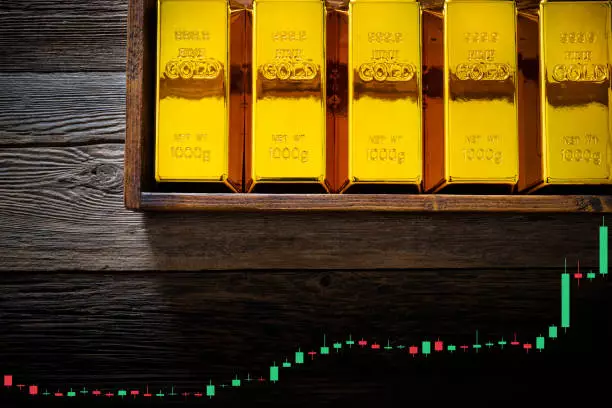Gold (XAU/USD) has showcased remarkable strength in the first quarter of 2025, achieving an extraordinary 19% surge. This trajectory positions gold prominently against other asset classes including the S&P 500 and Bitcoin, both of which experienced noteworthy declines during the same timeframe. The contrasting performance underscores gold’s formidable status as a safe haven in tumultuous economic landscapes. As a trader, it becomes essential to unravel the complexities of this trend and assess what drives gold’s appeal amid fluctuating market sentiments.
Drawing insights from this recent momentum, one can see that gold’s robust performance is more than just a fleeting phenomenon. Its ability to maintain a strong upward trajectory, with spikes leading to all-time highs, signals a vital hedge against uncertainties looming in the general economic climate. The backdrop of rising inflation expectations and weakened consumer sentiment fuels demand for gold, presenting opportunities for both seasoned investors and newcomers.
The Correction Phase and Its Implications
Despite hitting a peak of US$3,500 on April 22, 2025, gold’s journey has not been without turbulence. Following this historic high, the precious metal underwent a 10% correction, temporarily settling at US$3,120 by May 15. This decline can be attributed to a resurgence of the US dollar and an uptick in risk appetite among investors. Factors such as de-escalating trade tensions between the US and China have swayed market sentiments, revealing the interconnectedness of global finance and its impact on commodities.
Such pullbacks are not uncommon in the realm of trading; however, they can often present a ripe opportunity for discerning investors. The recent correction highlights vital support levels and popular technical indicators that suggest we may soon witness a shift. As market participants digest the implications of rising inflation expectations, leaning into gold has become increasingly strategic as a hedge against potential stagflation.
The Economic Landscape: A Division of Soft and Hard Data
The divergence between soft economic indicators, like consumer sentiment surveys, and hard data such as retail sales captures a crucial narrative of present-day market dynamics. The recent decline in the University of Michigan Consumer Sentiment Index to levels unseen since mid-2022, coupled with heightening inflationary expectations, raises the specter of stagflation. As retail sales are instrumental to US economic performance, this lack of consumer confidence is concerning.
To navigate this intricate economic scenario effectively, one must analyze more than just the chart patterns. The intertwining narratives of inflation, consumer sentiment, and global market forces create a feedback loop, impacting everything from investment strategies to risk assessments. Gold’s historical role as a hedge against inflation means that, especially in today’s environment, asset allocation toward this commodity may yield a protective cushion for portfolios.
Technical Analysis: Charting Gold’s Future Directions
As any astute trader knows, keeping an eye on technical indicators is paramount. Recent developments suggest that the recent corrective phase encountering resistance at the 50-day moving average bodes positively for gold’s trajectory. The formation of a “higher low” and stabilization of the Relative Strength Index (RSI) indicates a diminishing bearish sentiment.
Should gold manage to reclaim its position above US$3,305, it may initiate a powerful reversal back towards its previous highs. Conversely, a slip below US$3,056 could expose deeper levels of support and set the stage for a potential prolonged decline. Understanding these technical markers can position traders favorably, whether they lean toward bullish or bearish strategies.
The Investor Mindset: Adapting to Market Sentiment
Trading in volatile markets necessitates a keen understanding of psychological elements influencing market behavior. A reluctant investor mindset can exacerbate downturns, causing strategies to buckle under pressure. In light of the recent inflationary pressures, astute market players should embrace a proactive response—whether it means rebalancing portfolios or increasing gold allocations to mitigate risks.
With the lessons from the past and the current economic outlook laid before us, there’s an undeniable argument for gold’s enduring value. As economic tides ebb and flow, having a weighted stake in gold appears not just prudent but essential. The unique characteristics of this asset, historically a reliable hedge against economic uncertainty, reinforce its growing appeal as an integral part of any diversified investment strategy.
In the ever-shifting terrain of global finance, gold presents itself as a stalwart, ready to provide stability amidst chaos, inviting investors to be mindful of both their strategies and the compelling narratives shaping market dynamics in 2025 and beyond.

